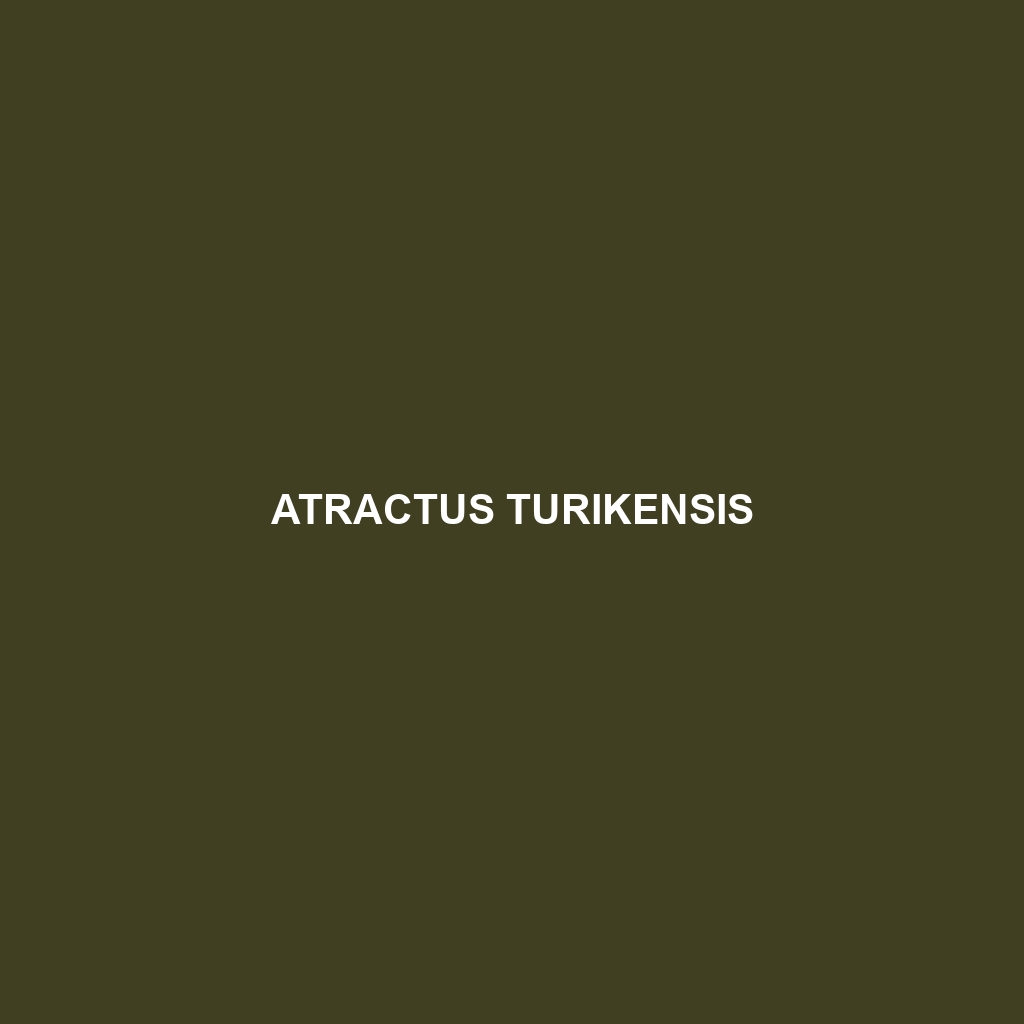Atractus turikensis – Species Description
Common Name: Atractus turikensis
Scientific Name: Atractus turikensis
Habitat
Atractus turikensis is primarily found in the humid tropical forests of the eastern Andes in Colombia. This species typically inhabits dense leaf litter and forest floor areas, thriving in environments with high humidity and ample vegetation. These snakes are often located in altitudes ranging from 1,200 to 2,000 meters, showcasing a preference for undisturbed habitats that provide cover and moisture.
Physical Characteristics
Atractus turikensis averages about 40 to 60 centimeters in length, making it a relatively small snake. Its coloration varies, often presenting a mix of earthy browns and blacks, which assists in camouflage against the forest floor. The body of Atractus turikensis is slender and elongated, with distinctive dorsal patterns that can include pale bands or speckles, which serve as key identification markers.
Behavior
This species is primarily nocturnal, emerging at night to hunt and explore its habitat. Atractus turikensis exhibits secretive behavior, often burrowing underground or hiding under leaf litter during the day to evade potential predators. Additionally, it is known for its smooth movements and ability to quickly navigate through dense vegetation, making it an adept hunter in its environment.
Diet
The diet of Atractus turikensis mainly consists of earthworms, small invertebrates, and possibly small amphibians. As a carnivorous snake, it relies on its keen sense of smell to locate and capture prey in the dark. This feeding behavior is essential for maintaining the balance within its ecosystem, as it helps control invertebrate populations.
Reproduction
Atractus turikensis is oviparous, meaning it lays eggs to reproduce. The breeding season typically occurs during the rainy months, which provide ideal conditions for egg-laying and hatching. Females can lay a clutch of approximately 5 to 10 eggs, which they often bury in moist soil to ensure their protection. The young emerge a few weeks later, independent and capable of seeking food immediately.
Conservation Status
Currently, Atractus turikensis is classified as “Vulnerable” according to the IUCN Red List. The primary threats to its survival include habitat loss due to deforestation and agricultural expansion. Conservation efforts are critical to preserving the remaining habitat and ensuring the survival of this unique species.
Interesting Facts
One fascinating aspect of Atractus turikensis is its ability to change skin color slightly depending on environmental conditions, enhancing its camouflage. This adaptive trait allows it to evade predators and remain hidden from prey. Additionally, this species is of interest to herpetologists due to its limited geographical range and the implications this has for biodiversity in the region.
Role in Ecosystem
Atractus turikensis plays an important role in its ecosystem as both a predator and prey. It helps control populations of small invertebrates and serves as a food source for larger predators, thereby contributing to the food web dynamics within its environment. Its presence indicates a healthy, functioning habitat, making it an important species for ecological studies and conservation efforts.
